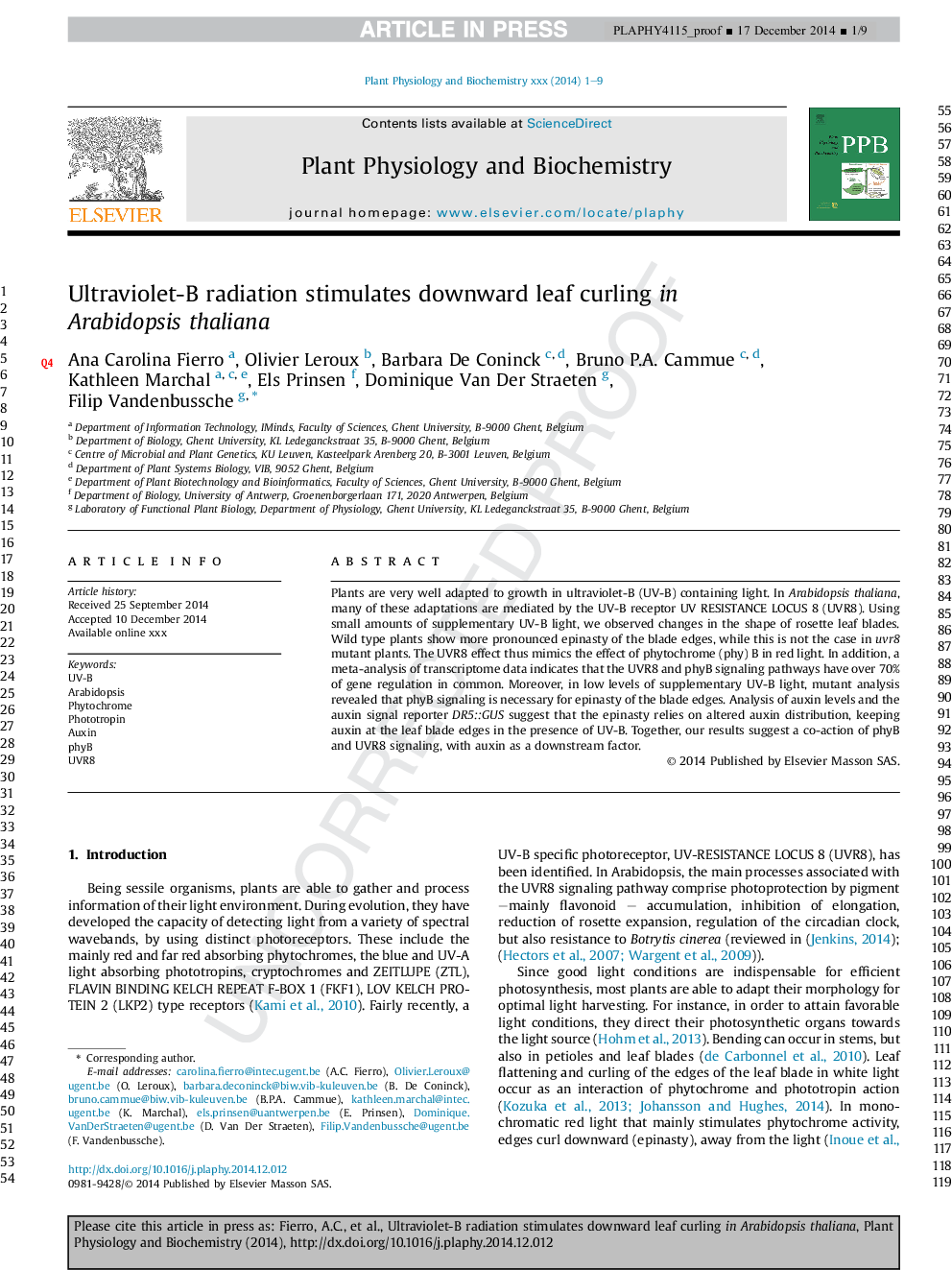| Article ID | Journal | Published Year | Pages | File Type |
|---|---|---|---|---|
| 8354826 | Plant Physiology and Biochemistry | 2015 | 9 Pages |
Abstract
Plants are very well adapted to growth in ultraviolet-B (UV-B) containing light. In Arabidopsis thaliana, many of these adaptations are mediated by the UV-B receptor UV RESISTANCE LOCUS 8 (UVR8). Using small amounts of supplementary UV-B light, we observed changes in the shape of rosette leaf blades. Wild type plants show more pronounced epinasty of the blade edges, while this is not the case in uvr8 mutant plants. The UVR8 effect thus mimics the effect of phytochrome (phy) B in red light. In addition, a meta-analysis of transcriptome data indicates that the UVR8 and phyB signaling pathways have over 70% of gene regulation in common. Moreover, in low levels of supplementary UV-B light, mutant analysis revealed that phyB signaling is necessary for epinasty of the blade edges. Analysis of auxin levels and the auxin signal reporter DR5::GUS suggest that the epinasty relies on altered auxin distribution, keeping auxin at the leaf blade edges in the presence of UV-B. Together, our results suggest a co-action of phyB and UVR8 signaling, with auxin as a downstream factor.
Related Topics
Life Sciences
Agricultural and Biological Sciences
Plant Science
Authors
Ana Carolina Fierro, Olivier Leroux, Barbara De Coninck, Bruno P.A. Cammue, Kathleen Marchal, Els Prinsen, Dominique Van Der Straeten, Filip Vandenbussche,
